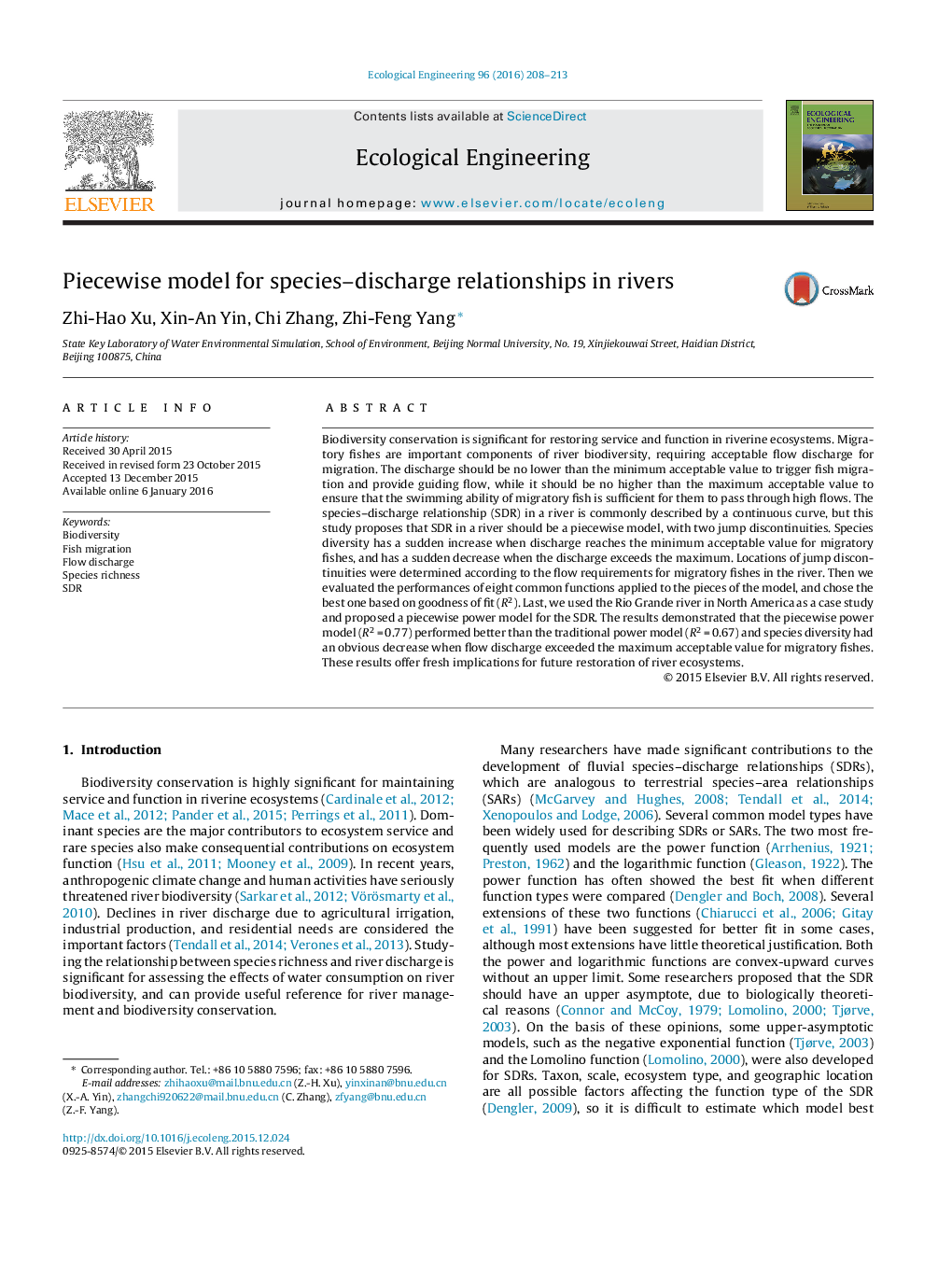| Article ID | Journal | Published Year | Pages | File Type |
|---|---|---|---|---|
| 5744104 | Ecological Engineering | 2016 | 6 Pages |
â¢A piecewise power model was developed for species-discharge relationships.â¢Two jump discontinuities occur in the SDR due to flow requirement of migratory fish.â¢Species richness has a sudden decrease as discharge exceeds a certain value.â¢Excessively high or low discharges are detrimental to biodiversity conservation.
Biodiversity conservation is significant for restoring service and function in riverine ecosystems. Migratory fishes are important components of river biodiversity, requiring acceptable flow discharge for migration. The discharge should be no lower than the minimum acceptable value to trigger fish migration and provide guiding flow, while it should be no higher than the maximum acceptable value to ensure that the swimming ability of migratory fish is sufficient for them to pass through high flows. The species-discharge relationship (SDR) in a river is commonly described by a continuous curve, but this study proposes that SDR in a river should be a piecewise model, with two jump discontinuities. Species diversity has a sudden increase when discharge reaches the minimum acceptable value for migratory fishes, and has a sudden decrease when the discharge exceeds the maximum. Locations of jump discontinuities were determined according to the flow requirements for migratory fishes in the river. Then we evaluated the performances of eight common functions applied to the pieces of the model, and chose the best one based on goodness of fit (R2). Last, we used the Rio Grande river in North America as a case study and proposed a piecewise power model for the SDR. The results demonstrated that the piecewise power model (R2Â =Â 0.77) performed better than the traditional power model (R2Â =Â 0.67) and species diversity had an obvious decrease when flow discharge exceeded the maximum acceptable value for migratory fishes. These results offer fresh implications for future restoration of river ecosystems.
